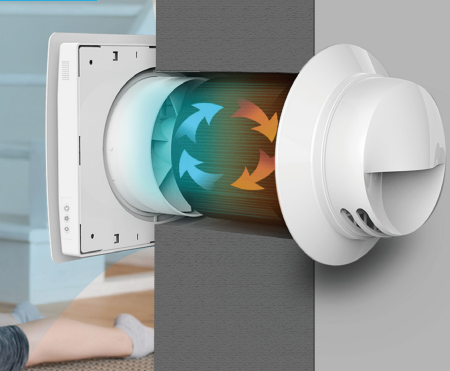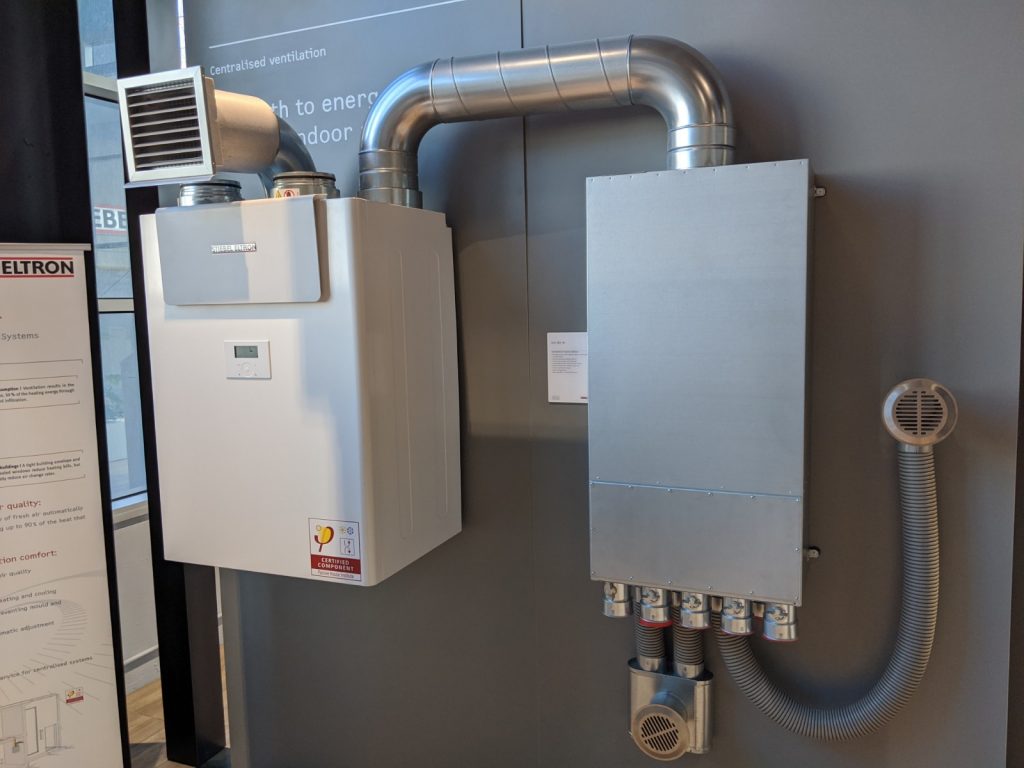Checking out the Conveniences of Heat Recovery Ventilation for Energy Performance in Residences
Heat Recovery Ventilation (HRV) systems use property owners a sensible approach to enhancing power effectiveness. By reclaiming warm from outward bound air, these systems can substantially decrease heating & cooling costs. In addition, they offer a consistent supply of fresh air, enhancing interior air high quality and comfort degrees. As house owners think about sustainable choices, understanding the nuances of HRV systems becomes progressively essential. What elements should one review before making such a financial investment?
Comprehending Heat Recovery Ventilation Equipments

Exactly How HRV Boosts Indoor Air High Quality

Energy Financial Savings: The Economic Advantages of HRV
Making best use of power effectiveness, heat recovery ventilation (HRV) systems offer substantial monetary advantages for property owners. By recovering and recycling warm from exhaust air, HRVs considerably decrease cooling and heating costs. This innovation can result in energy cost savings of as much as 30%, depending upon climate and usage patterns. Home owners commonly see lowered energy expenses soon after installation, making HRVs a financially wise financial investment with time. In addition, several regions supply rewards or refunds for energy-efficient upgrades, even more enhancing the financial allure. As power prices remain to climb, the cost-effectiveness of HRVs ends up being increasingly clear. Generally, the incorporation of HRV systems not only promotes power performance yet also adds to lasting monetary cost savings for homes.
The Ecological Impact of Heat Recovery Ventilation
A considerable ecological advantage of heat recovery ventilation (HRV) systems exists in their capacity to reduce total power consumption. By recovering heat from exhaust have a peek here air and transferring it to incoming fresh air, HRV systems lessen the need for energy-intensive heating and cooling down approaches. This reduction in power demand adds to lower greenhouse gas discharges, as much less nonrenewable fuel source is required to maintain comfy interior temperatures. Furthermore, HRV systems boost indoor air top quality by effectively trading stale air with fresh outside air, lowering dependence on mechanical cooling systems that can hurt the setting. In general, the execution of HRV systems sustains sustainable living practices and aligns with worldwide initiatives to deal with environment change by promoting energy efficiency in domestic settings.
Selecting the Right HRV System for Your Home
Exactly how can homeowners guarantee they select the best heat recovery ventilation (HRV) system for their requirements? Initially, they ought to examine their home's dimension and format, as these variables affect air movement needs. Next, reviewing the system's performance recommended you read rankings is important, as higher rankings suggest better efficiency and energy savings. House owners need to also consider installation and maintenance costs, contrasting different brand names and designs for worth. Furthermore, it's crucial to review noise levels, as some systems run even more silently than others. Consulting with a/c specialists can supply tailored recommendations based upon specific home problems. Lastly, analyzing user evaluations and guarantees can assist in making an educated decision, ensuring that the chosen HRV system successfully improves interior air quality and energy performance.
Often Asked Questions

How Often Should I Clean or Keep My HRV System?
The frequency of cleansing or maintaining a warm recuperation ventilation (HRV) system commonly depends on usage and ecological variables. Normally, it is recommended to execute maintenance every 6 months to guarantee peak efficiency and air high quality.

Can HRV Solutions Help In Reducing Moisture Levels Inside Your Home?
HRV systems can effectively decrease interior humidity degrees by exchanging stale, humid air with fresh, drier air from outdoors. HRV Heat Recovery Ventilation. This process assists maintain a well balanced interior environment, improving comfort and preventing moisture-related concerns
What Is the Life expectancy of a Regular HRV System?
The lifespan of a common heat recovery ventilation (HRV) system varies, typically lasting in between 10 to 15 years. Routine upkeep can expand its performance and operational life, making sure peak performance throughout its use duration.
Exist Any Type Of Sound Interest In HRV Equipments?
Noise worries with HRV systems can develop, specifically from follower procedure. Lots of contemporary devices are developed to decrease audio levels, guaranteeing they run quietly while keeping efficiency, which resolves prospective disturbances in living environments.
Can I Install an HRV System Myself, or Do I Required a Specialist?
The individual contemplated whether to install the heat recovery ventilation (HRV) system directly or hire a professional. Generally, while do it yourself installment is feasible, experience assurances correct capability and compliance the original source with neighborhood building regulations, improving system performance.